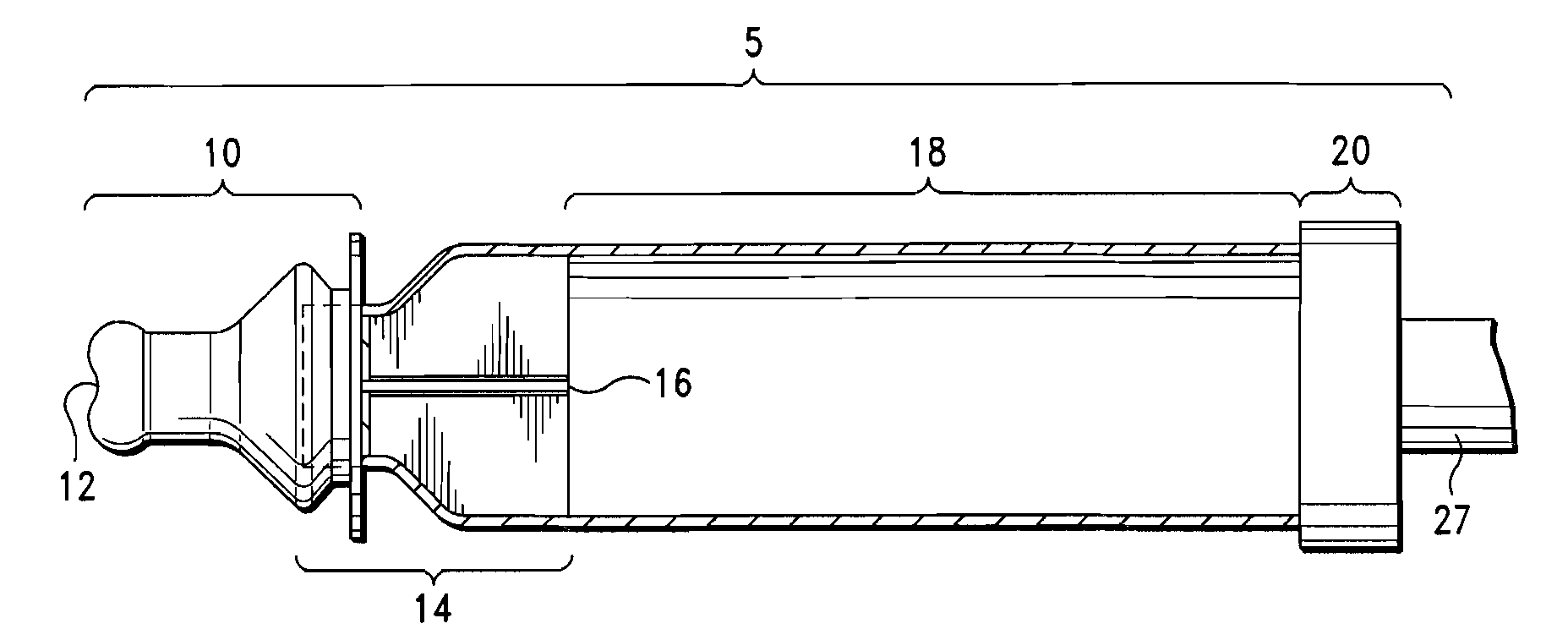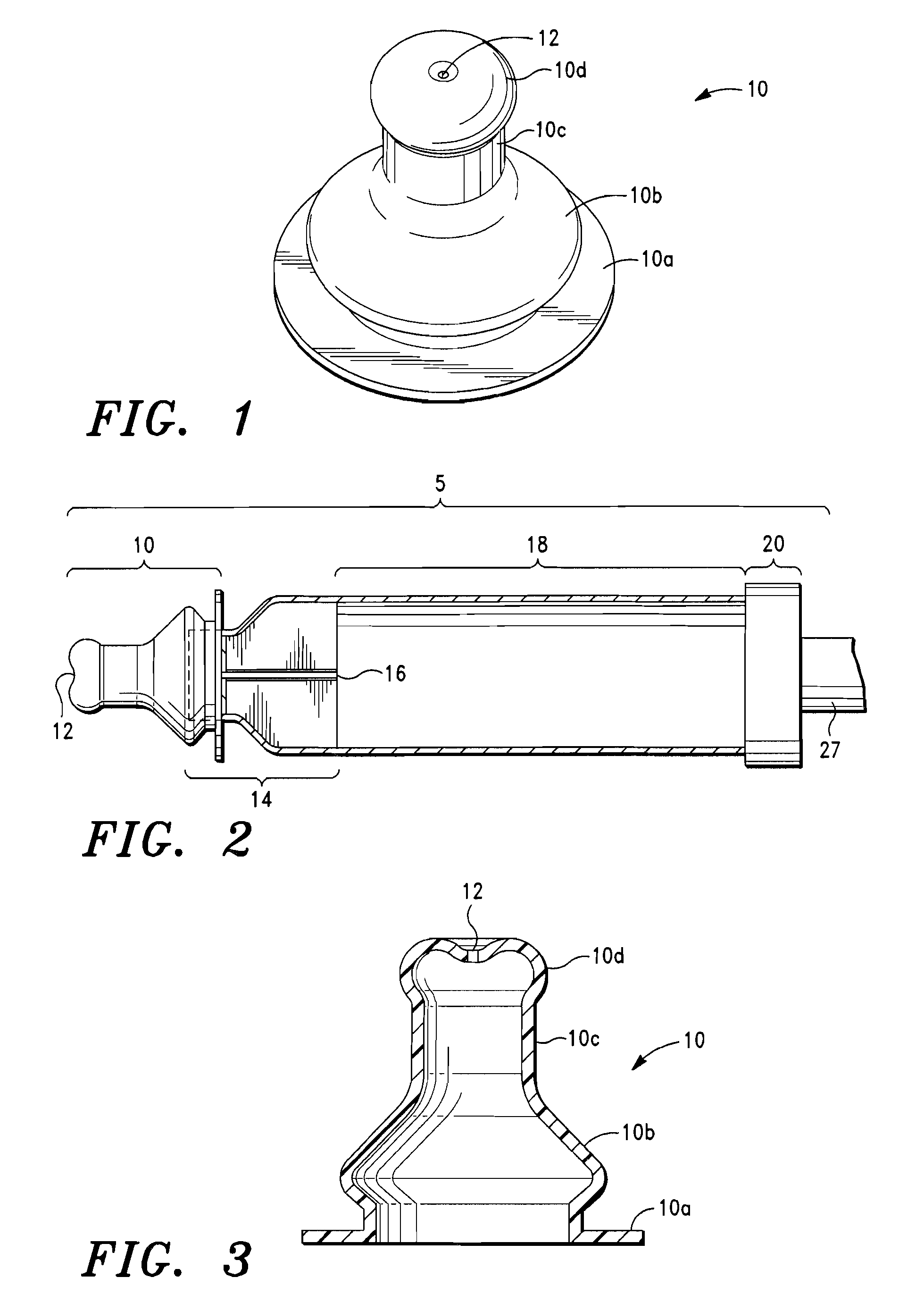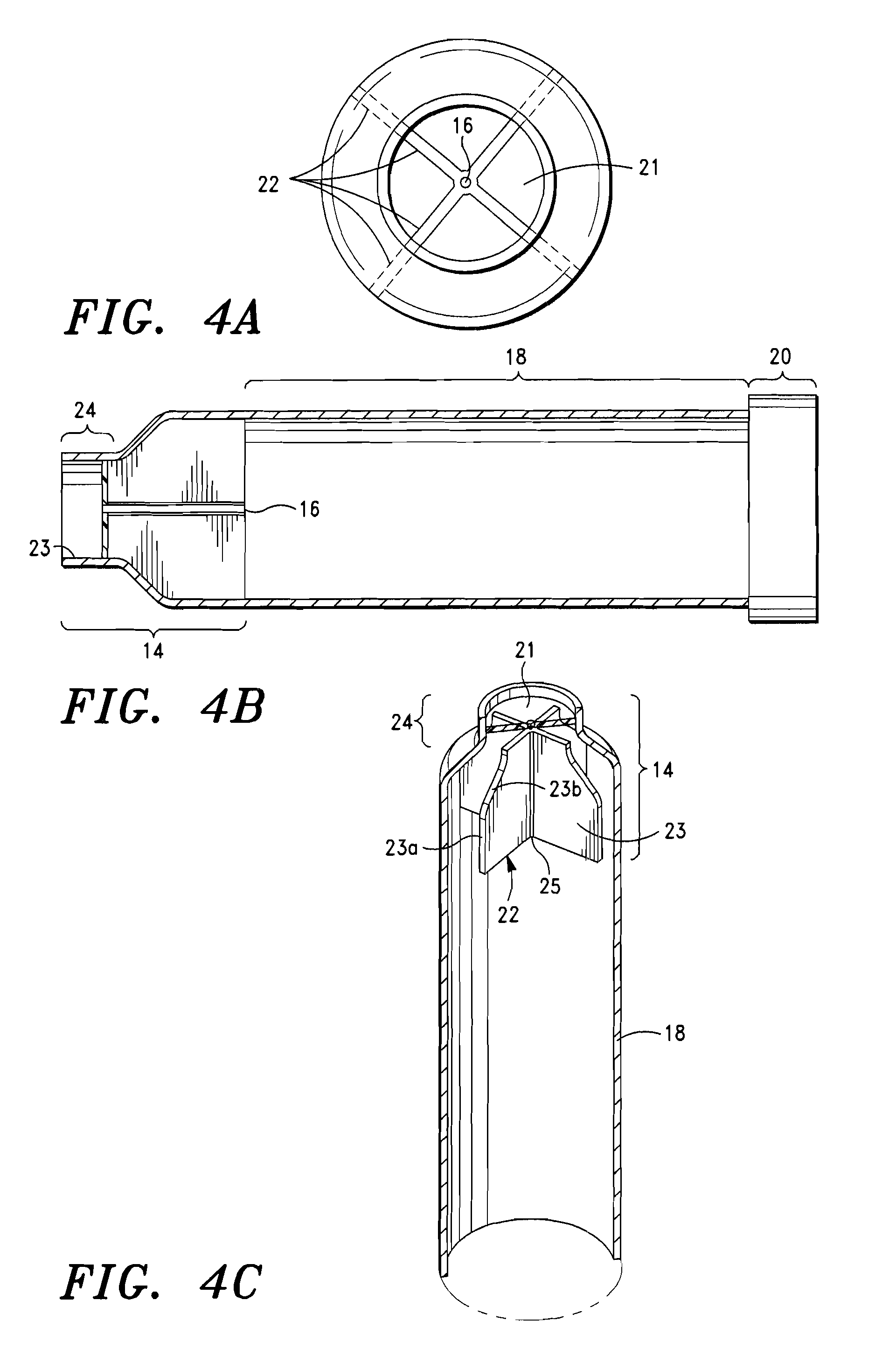Mouthpiece and Flow Rate Controller for Intrapulmonary Delivery Devices
a flow rate controller and intrapulmonary delivery technology, applied in the field of therapeutics, can solve the problems of not facilitating inspiration, unable to permit the administration of defined dosages, and difficult to ensure that the patient has inhaled the correct dosage of medicaments
- Summary
- Abstract
- Description
- Claims
- Application Information
AI Technical Summary
Benefits of technology
Problems solved by technology
Method used
Image
Examples
Embodiment Construction
[0037]The intrapulmonary delivery device 5 shown in FIG. 2 comprises a mouthpiece 10, a flow rate controller 14, and a container 18. Details of the mouthpiece 10 are illustrated in FIGS. 1 and 3. The mouthpiece is a unitary structure of flexible material having an annular flat flange portion 10a, a bulbous intermediate portion 10b, the diameter of which is slightly less than the diameter of flange portion 10a, a cylindrical portion 10c and a nipple portion 10d. Nipple portion 10d has an orifice 12 at the distal end away from flange portion 10a. The mouthpiece 10 is elongated and generally tubular and is made of a flexible material that can withstand sterilization via hot water, e.g. latex or silicone rubber. Preferably, the mouthpiece is made of a clear silicone rubber-type material so that deposits of medicament or other substances within the mouthpiece can be easily viewed and removed. The orifice 12 of the mouthpiece 10 has a diameter of approximately about 3.1 mm to 8 mm and a r...
PUM
 Login to View More
Login to View More Abstract
Description
Claims
Application Information
 Login to View More
Login to View More - R&D
- Intellectual Property
- Life Sciences
- Materials
- Tech Scout
- Unparalleled Data Quality
- Higher Quality Content
- 60% Fewer Hallucinations
Browse by: Latest US Patents, China's latest patents, Technical Efficacy Thesaurus, Application Domain, Technology Topic, Popular Technical Reports.
© 2025 PatSnap. All rights reserved.Legal|Privacy policy|Modern Slavery Act Transparency Statement|Sitemap|About US| Contact US: help@patsnap.com



